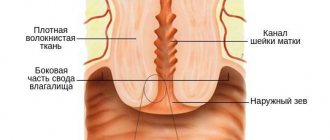Physical exercise
The child should systematically engage in physical education in a gentle manner. If you immediately organize active training for your child, there is a high chance that he will have problems with his joints - primarily with his knees. For metabolic syndrome, the following loads are recommended for children and adolescents:
- swimming,
- race walking,
- cycling
The duration of the workout should initially be 10-15 minutes, then the duration is gradually increased, reaching a maximum of 40-70 minutes per day.
Metabolic syndrome and its manifestations are completely reversible. Physical activity, diet therapy and compliance with other recommendations of the attending physician are necessary. Don't neglect them before metabolic syndrome leads to serious illness.
Treatment
Comprehensive treatment of metabolic syndrome includes the following equivalent aspects:
- lifestyle changes;
- obesity treatment;
- treatment of carbohydrate metabolism disorders;
- treatment of arterial hypertension;
- treatment of dyslipidemia.
This is a complex and lengthy process that must be carried out under the supervision of a specialist.
In relatively mild forms of metabolic syndrome, progress is noticeable once the patient returns to normal weight. Maintaining a healthy physical shape and maintaining normal weight are the two main rules against metabolic syndrome. In more advanced forms, the use of drugs that reduce insulin resistance and treat arterial hypertension may be required.
“The first signs” of diabetes
Diabetes mellitus is preceded by the following conditions:
- Obesity of varying degrees, including the stage of overweight.
- Insulin resistance is elevated levels of insulin that are unable to effectively lower blood glucose (sugar) levels.
- Increased blood glucose levels on an empty stomach and after meals.
- Metabolic syndrome is a combination of several pathological conditions: abdominal obesity, high blood pressure, increased blood glucose and “bad” cholesterol fractions
It is noteworthy that all these changes are reversible if they are detected in the early stages and therapeutic and preventive measures are taken in a timely manner.
Already at the above stages of prediabetes, early changes are detected in small nerve fibers, in the vessels of the kidneys and retina. Pain and paresthesia in the feet (pain, burning, tingling sensation, cramps, sensation of “goosebumps” on the skin) may also occur, which are associated with damage to small vessels and nerve endings of the foot. Changes in the fundus, blood vessels of the kidneys and feet in the stage of prediabetes are a poor prognostic criterion associated with the risk of more rapid development of complications. Also, in the previous stages, combined, simultaneous damage to the vessels of the retina and kidneys is observed. This is due to the anatomical similarity of the blood vessels of both organs. In addition, the appearance of sugar in the urine leads to inflammatory whitening of the kidneys - pyelonephritis, which contributes to the development of chronic renal failure.
The platform for preventing diabetes mellitus is a timely visit to an endocrinologist and diagnosis of laboratory markers of prediabetes. In this case, the time factor is of key importance.
Metabolic syndrome. SOS!!!!
About 30 years ago the term “metabolic syndrome” was first coined. Diseases such as diabetes mellitus, arterial hypertension, obesity, and coronary heart disease are well known. Most often, these problems do not occur individually, but together, and this phenomenon - a set of metabolic, hormonal and clinical disorders in the human body, the basis of which is obesity - is called metabolic syndrome. Metabolic syndrome has subsequently been given many other names, including Syndrome X, Deadly Quartet, Reaven Syndrome, and Insulin Resistance Syndrome.
The World Health Organization has described metabolic syndrome as the “plague of the 21st century.” This assessment has its reasons - today the symptoms of metabolic syndrome are recognized in 20-40% of the population, including children.
The first signs begin to appear against the background of an increase in fat deposits. The causes of metabolic syndrome (hereinafter referred to as MS) are obvious, and they are a consequence of the latest achievements of our civilization. This is a sedentary lifestyle and poor diet combined with smoking and drinking alcohol.
The initial symptom is the appearance of excess weight. A sign of metabolic syndrome is the so-called abdominal obesity. With it, adipose tissue is deposited on the abdomen and the amount of “internal” fat increases (this may not be visible from the outside). Abdominal fat has increased resistance to insulin, unlike subcutaneous fat.
The initial diagnosable symptoms of metabolic syndrome are a violation of the normal ratio of fats in the blood and arterial hypertension. However, all manifestations of MS are based on the phenomenon of insulin resistance : the amount of insulin and glucose in the blood simultaneously increases, but the cells do not receive enough glucose (due to its “insensitivity” to insulin). Let us remember that all this occurs against the background of obesity.
Atherosclerosis and coronary heart disease are also closely related to MS . Not all MS symptoms appear simultaneously or to the same extent. Sometimes MS can be diagnosed even with a slight increase in body weight in combination with such signs as increased fatigue, shortness of breath, headaches, frequent urination, thirst, increased appetite, apathy, etc. Another of the main symptoms of MS is type 2 diabetes mellitus . It also makes sense to consult a doctor to identify MS in case of angina pectoris (recurrent pain in the heart), erectile dysfunction in men and polycystic ovary syndrome in women, gout and high levels of uric acid in the blood.
Diagnosis of metabolic syndrome.
Today, there are several methods or criteria for diagnosing metabolic syndrome. Different sets of criteria have been proposed by the World Health Organization, the International Diabetes Federation, and the American National Education Committee on Cholesterol Metabolism.
According to the proposed method, the key criteria for metabolic syndrome are:
Waist circumference is more than 80 cm in women and more than 94 cm in men.
Blood pressure level (more than 130/85 mmHg)
Triglyceride level (≥ 1.7 mmol/l);
Levels of low (> 3.0 mmol/L) and high (<1.0 mmol/L in men; <1.2 mmol/L in women) density lipoproteins;
Fasting plasma glucose level (fasting plasma glucose ≥ 6.1 mmol/L);
Glucose tolerance (plasma glucose 2 hours after a glucose load within ≥7.8 and ≤11.1 mmol/l);
If the main criterion (waist circumference) and any two additional criteria are identified, the diagnosis of metabolic syndrome is considered confirmed.
Obesity is the root cause of serious diseases. It is not arterial hypertension that causes obesity, but, on the contrary, obesity is a violation of vascular tone with all the ensuing consequences. It is not type 2 diabetes that “pulls on” extra pounds, but the insensitivity of tissues to insulin, which underlies obesity, leads to “sugar disease.”
The whole point is that the situation can be played back. By and large, metabolic syndrome only gives an 'SOS signal': take care of yourself urgently! Let's say, from the moment carbohydrate metabolism is disrupted to the point when diabetes becomes a fact, not a week or a month passes. From 4 to 8 years, the body is able to balance the situation at the very least. So there is time! It is difficult to admit that the 'deadly quartet' itself will not stop playing under any circumstances. You and only you order this 'music'.
Prevention and treatment
There is no point in accepting this diagnosis. We must understand that this condition is reversible. Of course, first of all you need to try to lose weight. A 5-10 percent weight loss results in a 20 percent reduction in bad cholesterol levels and a noticeable decrease in average daily blood pressure.
With proper treatment, the severity of metabolic syndrome can be reduced. Moreover, the main efforts should be directed toward burning calories naturally.
Increase your physical activity
Try to walk as much as possible, refuse the elevator in favor of steps, visit the pool, do Nordic walking or physical therapy.
Massage is also indicated, including self-massage, mechanical vacuum therapy, myostimulation, cryotherapy, algae and mud wraps. These physiotherapeutic methods can improve metabolism. Hirudotherapy is also recommended, since the saliva that the leech injects into the wound contains the enzyme hirudin, which has an anti-sclerotic effect.
Stop smoking and minimize your consumption of alcoholic beverages.
Control your blood pressure and blood sugar levels
Make adjustments to your diet
At the same time, you should not go on a strict diet - this can lead to the opposite result. Weight should be reduced gradually, no more than 2–4 kg per month. There is no need to set yourself the goal of achieving ideal performance. Losing weight by 10-15% will already be a good achievement.
Carbohydrates should make up 50% of the diet. However, it is necessary to replace simple carbohydrates (sweets, flour, white rice) with complex ones (buckwheat, oatmeal, brown rice, rye bran bread).
Don't add enough salt to your food. This does not exclude the periodic consumption of washed sauerkraut, lightly salted cucumbers, and a piece of lightly salted herring.
Every day you need to eat at least 400 g of vegetables and fruits. In this case, vegetables and fruits containing a lot of potassium are preferred: this element helps reduce blood pressure. They are rich in green leafy vegetables, carrots, bananas, watermelons, melons, dried fruits (primarily dried apricots), beans, peas, and baked potatoes.
Fats should not occupy more than 30%, of which 1/3 should be animal fats, and 2/3 should be vegetable fats. The diet should include 10–15 g of vegetable oils - sunflower, olive, flaxseed, cedar. They are added to salads, vinaigrettes and other dishes. Cold-pressed vegetable oils are preferred: they contain polyunsaturated fatty acids omega 3 and omega 6.
20% of calories should come from protein foods. Of the total amount of protein in the diet, at least 50% should be obtained from lean meat, cottage cheese, as well as eggs and seafood. It is recommended to eat moderately fatty sea fish 2-3 times a week.
To neutralize “bad” cholesterol, for every serving of meat there should be two servings of vegetables and herbs.
Monitor your diet
Fractional nutrition is one of the most important principles of diet therapy. Keeping a food diary helps you lose weight. As nutritionists never cease to repeat, “if you want to lose weight, never let yourself go hungry!” Rare meals cause a strong desire to eat, making it difficult to regulate appetite. You need to eat 5-6 times a day.
Learn to control your emotions , because stress is one of the important provocateurs of obesity. It is believed that all people are divided into two camps: the minority go hungry when stressed, the majority “eat up” stress, spending it almost next to the refrigerator. And then controlling your appetite is much more difficult: excess accumulation of fat in the body is accompanied by an excess concentration of insulin in the blood, which provokes an even greater feeling of hunger.
Try to normalize your rest routine . It has been proven, for example, that for weight correction, sleeping for 8 hours is preferable to sleeping for four hours.
Since metabolic syndrome is a “hodgepodge”, and the ingredients in it can be different, this means that the treatment will be individual. There is severe arterial hypertension - you will also need antihypertensive drugs, increased 'bad cholesterol' - statins, etc. Doctors - and cardiologists, endocrinologists, and therapists deal with metabolic syndrome - select medications carefully, and among them there are those who use which can kill several birds with one stone. In principle, you can reason with each member of the 'deadly quartet', but with one condition - if you receive treatment almost constantly and do not argue with specialists! Be healthy!
Leading laboratory assistant at the Department of Functional Diagnostics of BelMAPO Malakhovskaya S.N.








